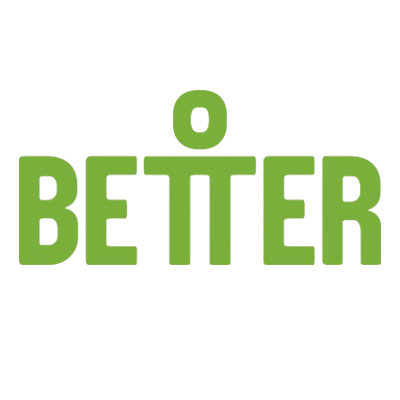In case you missed it see what’s in this section
Let's Talk
LGBTQIA+ Guide
A Guide To Understand The LGBTQIA+ Community
What does the term LGBTQIA+ actually mean?
Well, it stands for Lesbian, Gay, Bisexual, Transgender, Queer, Intersex, and Asexual. The + refers to other identities which people may choose to use.
Over a million people in the UK identify as LGBTQIA+ and deepening your understanding of terms used can help you support someone who identifies as part of the LGBTQIA+ community. This glossary of terms is designed to help you to understand how, why and when people might choose to use these terms when referring to themselves or others in their community. This list is by no means exhaustive – and some of these terms can mean different things to different people – not all identities are listed.
After reading this and you’re still unsure of someone’s pronoun or label, just ask them respectfully. When meeting new people try integrating inclusive language into your regular conversations by using gender neutral terms such as ‘partner’ or ‘they’ ‘them’. And if you accidentally assumed someone’s label and get it wrong, don’t panic, it happens. Simply apologise and correct yourself. More often than not, the person you’re talking to will know that the process of unlearning is new to you and will appreciate your honesty and effort.
Before we go into the terms, first: what does the term LGBTQIA+ actually mean? Well, it stands for lesbian, gay, bisexual, transgender, queer, intersex, and asexual. The + refers to other identities which people may choose to use.
LGBTQIA+ terms
Androgyne: A person with a gender that is both masculine and feminine or in between the two.
Asexual: This term refers to a person who feels very little or no sexual attraction to other people. Asexuality is distinct from celibacy, which is the deliberate abstention from sexual activity, despite sexual desire. Some asexual people do have sex and do experience varying levels of sexual attraction. There are many diverse ways of being asexual. A person who does not experience sexual attraction can experience other forms of attraction such as romantic attraction, physical attraction or emotional attraction as separate aspects of their identity. However, some asexual people may only be physically but not emotionally attracted to members of their own gender, whilst others might be physically attracted to all genders but only emotionally attracted to members of one gender.
Bisexual: A person whose primary sexual and affectional orientation is toward people of the same and other genders, or towards people regardless of their gender. Some people may use bisexual and pansexual interchangeably.
Butch: A term used traditionally in the lesbian community; butch describes lesbians who exhibit ‘traditionally’ masculine looks/behaviour.
Cisgender:A gender identity, or performance in a gender role, that society deems to match the person’s assigned sex at birth. The prefix cis- means ‘on this side of’ or ‘not across’.
Cissexism/Genderism: The pervasive system of discrimination and exclusion founded on the belief that there are, and should be, only two genders and that one’s gender or most aspects of it, are inevitably tied to the sex assigned at birth. This system oppresses people whose gender and/or gender expression falls outside of cis-normative constructs.
Coming out: Coming out is the process of voluntarily sharing one’s sexual orientation and/or gender identity with others. This process is unique for each individual and there is no right or wrong way to come out.
Cross dresser: A term to describe a person who dresses, at least partially, as a member of a gender other than their sex assigned at birth. it’s critical to remember that the term carries no implications of sexual orientation. Thus, a heterosexual cisgender man may choose to dress in women’s clothing but not be attracted to men. Cross dresser has replaced the older term ‘transvestite’.
Demisexual: Demisexuality is a sexual orientation in which someone feels sexual attraction only to people with whom they have an emotional bond. Most demisexuals feel sexual attraction rarely compared to the general population, and some have little to no interest in sexual activity. Demisexuals are considered to be on the asexual spectrum.
Femme: Traditionally used within the lesbian community, femme is a term used to describe lesbians who exhibit ‘traditionally’ feminine looks and behaviours.
Gay: A sexual and affectional orientation toward people of the same gender.
Gender: A social construct used to classify a person as a man, woman, or some other identity. Gender is fundamentally different from the sex one is assigned at birth which is not a social contract but one of biology.
Gender expression: How one expresses oneself, in terms of dress and/or behaviours. Society, and people that make up society characterise these expressions as “masculine,” “feminine,” or “androgynous.” Individuals may embody their gender in a multitude of ways and have terms beyond these to name their gender expression(s).
Gender- fluid: A person whose gender identification and presentation shifts, whether within or outside of societal, gender-based expectations. Someone who is genderfluid might identify as a woman one day and a man the next. They might also identify as agender, bigender, or another nonbinary identity.
Gender identity: Is the gender that an individual identifies with which may or may not correspond with the sex and gender one is assigned at birth.
Gender non-conforming (GNC): This is a term for people who do not subscribe to societal expectations of typical gender expressions or roles.
Graces/Grey As/Grey Asexuals: Individuals whose sexual attraction exists within the grey area between sexual and asexual. They experience sexual attraction infrequently or not very strongly.
Heteronormativity: Attitudes and behaviours that incorrectly assume gender is binary, ignoring genders besides male and female. For example, someone assigned female at birth is expected to 1) have a body that is considered ‘female’ by the dominant culture, 2) identify as a girl or woman, 3) act feminine and fulfil the roles associated with girls and/or women, and 4) be romantically and sexually attracted to men.
Heterosexual: An individual who feels physically and emotionally attracted to people of a gender other than their own.
Homosexual: An individual who feels physically and emotionally attracted to people of the same gender.
Internalised oppression: The fear and self-hate of one or more of a person’s own identities, this occurs for many individuals who have learned negative ideas about their identities from childhood.
Intersex: This is a general term used for a variety of situations in which a person is born with reproductive or sexual anatomy that doesn’t fit the boxes of ‘female; or ‘male’. Many visibly intersex people are assigned a sex in infancy by doctors to make the individual’s sex characteristics conform to society’s idea of what normal bodies should look like. Hermaphrodite is an outdated and inaccurate term that has been used to describe intersex people in the past.
Lesbian: A woman whose primary sexual and affectional orientation is toward people of the same gender. However, some nonbinary people also identify as lesbians, often because they have some connection to womanhood and are primarily attracted to women.
Microaggressions: Brief and subtle behaviours, whether intentional or not, that communicate hostile, derogatory, or negative messages of commonly oppressed identities. These actions cause harm through the invalidation of the target person’s identity and may reinforce stereotypes. Examples of microaggressions include describing something as being ‘gay’ to mean they think something is bad.
Misgendering: Attributing a gender to someone that is incorrect/does not align with their gender identity. Can occur when using pronouns and gendered language (e.g., ‘hello guys’, ‘hi ladies’) or assigning genders to people without knowing how they identify.
Non-binary: An umbrella term for people whose gender identity doesn’t sit comfortably with ‘man’ or ‘woman’. Non-binary identities are varied and can include people who identify with some aspects of binary identities, while others reject them entirely. Non-binary people sometimes identify with they/them pronouns or interchange between she/her and he/him.
Orientation: Orientation is one’s attraction or non-attraction to other people. An individual’s orientation can be fluid and people use a variety of labels to describe their orientation.
Pansexual/Omnisexual: Terms used to describe people who have romantic, sexual or affectional desire for people of all genders and sexes.
Polyamory: A term used to describe a person who is consensually in or opens to being in multiple loving relationships at the same time. Some polyamorists (polyamorous people) consider ‘polyam’ to be a relationship orientation. Sometimes used as an umbrella term for all forms of ethical, consensual, and loving non-monogamy.
Queer: A term to describe sexual and gender identities other than straight and cisgender. Historically, the term queer has been used as a slur against people whose gender, gender expression and/or sexuality do not conform to societal expectations. The term is often considered hateful when used by those who do not identify as LGBTQIA+.
Questioning: The process of exploring one’s own gender identity, gender expression, and/or sexual orientation.
Sapiosexual people: Individuals who are attracted to people based on intelligence, rather than gender identity or biological sex.
Sex: A medically constructed categorisation. Sex is often assigned based on the appearance of genitalia, either in ultrasound or at birth. Sex, a biological concept, is not to be confused with gender that is a societal concept.
Sexual orientation: Sexual orientation is an enduring emotional, romantic, sexual or affectional attraction or non-attraction to other people. Sexual orientation can be fluid and people use a variety of labels to describe their sexual orientation.
Spectrum of sexuality: Aspects of one’s identity such as their sexual orientation, gender identity, and gender expression exist on a spectrum. For example, with sexual orientation, the attraction to men, women, or someone of another gender all exist on separate spectrums. Someone might feel a little attracted to men, very much attracted to women, and moderate attraction to people outside this binary.
Trans: The term trans acts as a more inclusive term than transgender for gender non-conforming and non-binary people.
Transgender: An umbrella term, frequently abbreviated to trans. Identifying as transgender, or trans, means that one’s gender differs from the sex that person was assigned at birth. While transgender may refer to a woman who was assigned male at birth or a man who was assigned female at birth, transgender is an umbrella term that can also describe someone who identifies as a gender other than woman or man.
Transitioning: Transitioning is the process of taking steps to live as one’s true gender identity. Transitioning is different for each individual and may or may not involve medical interventions such as taking hormones or having surgery. The extent of someone’s transition does not make that person’s gender identity any less or more valid.
Transitioning may also include socially transitioning, such as going by certain pronouns (they/them, she/her, he/him). Transitioning may involve making changes to one’s physical appearance, such as wearing certain clothing, wearing one’s hair in a different style or length, or more complex changes such as medically transitioning through hormones or surgery. Transitioning can also involve changing legal documents to match one’s authentic sense of self.
Weather in Cardiff
Listings

















